How an engineer who was given a counterfeit chip discovered it was fake

There have been
Fake chips, I got stung – LinuxJedi's /dev/null
https://linuxjedi.co.uk/2023/12/01/fake-chips-i-got-stung/
Mr. Hutching, who was working on his own project to repair the Acorn Atom released in 1979, tried to replace the original CPU installed in the Acorn Atom with one that consumes less power.
The original CPU installed in the Acorn Atom, the 6502 , is manufactured using the NMOS process and consumes a lot of power, whereas the Rockwell R65C02 , which was released later, consumes less power. The feature is that it is finished. Since the R65C02 is manufactured on a newer process node than the original 6502, it should theoretically consume an order of magnitude less power than the 6502, but the R65C02 purchased by Hutchings has the same power consumption as the 6502. It was.
'The first thing I noticed was that the print was too bright compared to most chips I've used, and it seemed like everything was off,' Hutching said. As a result, Mr. Hutching began to suspect that the R65C02 he purchased was a counterfeit product.

Mr. Hutching first used
When Hutching rubbed the surface of the R65C02 he purchased with a cotton swab soaked in acetone, some of the printing easily disappeared, which made Hutching more suspicious that it was a counterfeit product.

Next, Mr. Hutching conducted a logic test. For logic testing, we used
'Diagnosis result, 6502' is displayed on the screen of Chip Tester Pro V2.

In addition, the number '0032' is printed on the surface of the R65C02 purchased by Mr. Hutching. Hutchings says this means the 32nd week of 2000. However, in 1999, Rockwell's semiconductor division was split into a company called Conexant , so chips manufactured after 1999 should have the Conexant logo printed on them. In other words, it is impossible for the number '0032' to be printed on a chip with the Rockwell logo printed on it.

Furthermore, when searching on the Internet, it seems that the correct wafer ID for R65C02 is '11450'. However, the R65C02 that Mr. Hutching purchased has '11473' printed on it.

After Hutching discovered that the R65C02 he purchased was a fake, he purchased another R65C02. Below is the photo, and the wafer ID is the correct '11450'. However, the date code is '1530' indicating 'manufactured in the 30th week of 2015', which should not use the Rockwell logo.
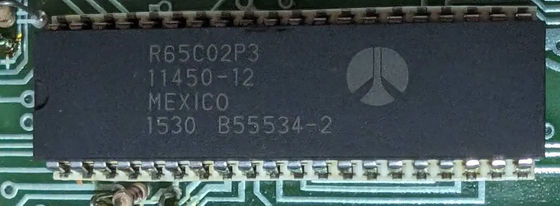
Below are the results of diagnosing the newly purchased R65C02 with Chip Tester Pro V2. 'Diagnosis result, 65C02' was displayed, and although there was a Rockwell logo, it was proven to be R65C02. In addition, Mr. Hutching assumes that the '3' at the end of 'R65C02P3' printed on the surface means that the rated frequency of R65C02 is '3MHz'.
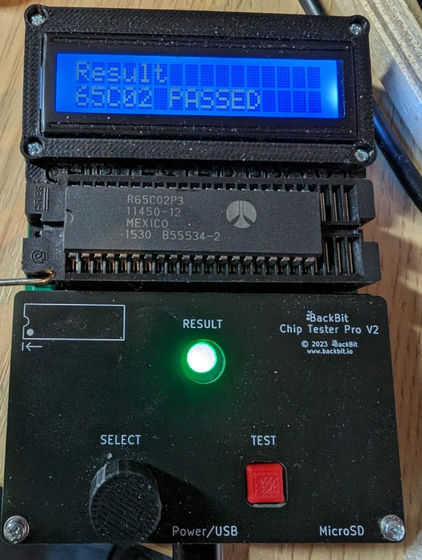
The image below is a photo of the original 6502 (top), the fake R65C02 (middle), and the supposedly real R65C02 (bottom) side by side.
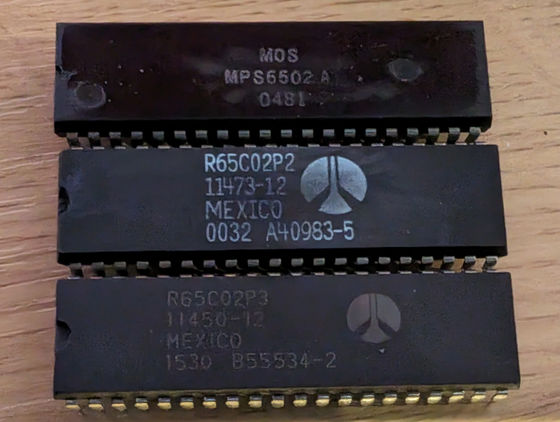
The back side looks like this. The original CPU has printing not only on the front but also on the back.
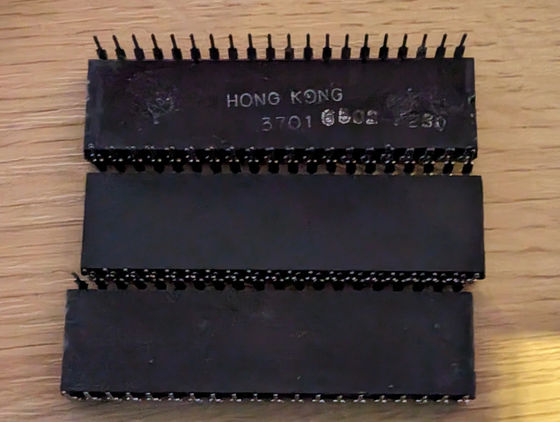
According to Mr. Hutching, there are many sellers in the UK selling counterfeit chips with different printing, and it is ``very difficult'' to tell whether an old chip is a counterfeit or not at the purchase stage. Hutchings warns that if the chip is counterfeit, it could cause physical damage to the machine used.
In addition, on the back of the fake R65C02, '贤' is written in Chinese, which apparently means 'noble, valuable, good.'
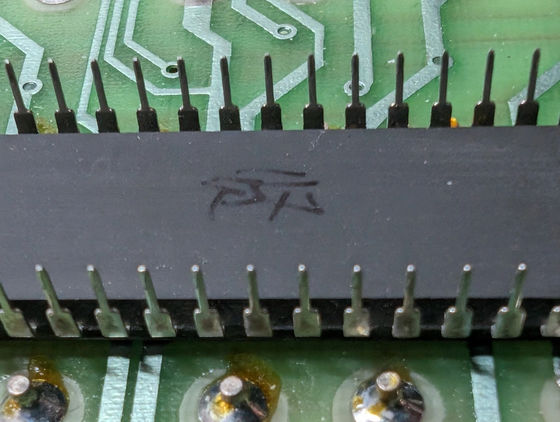
Related Posts:
in Hardware, Posted by logu_ii







